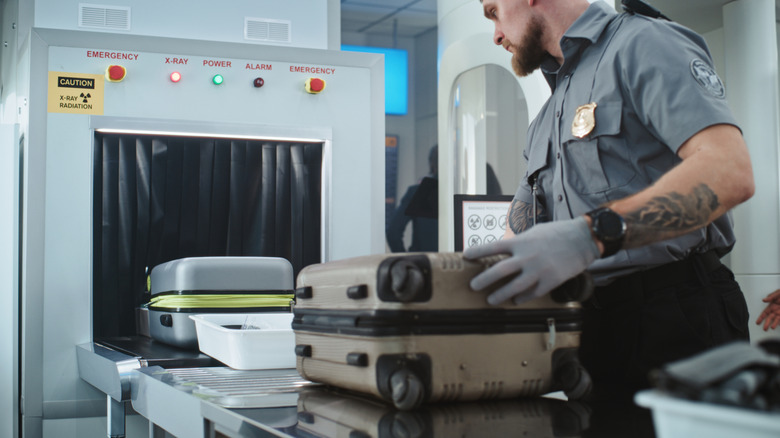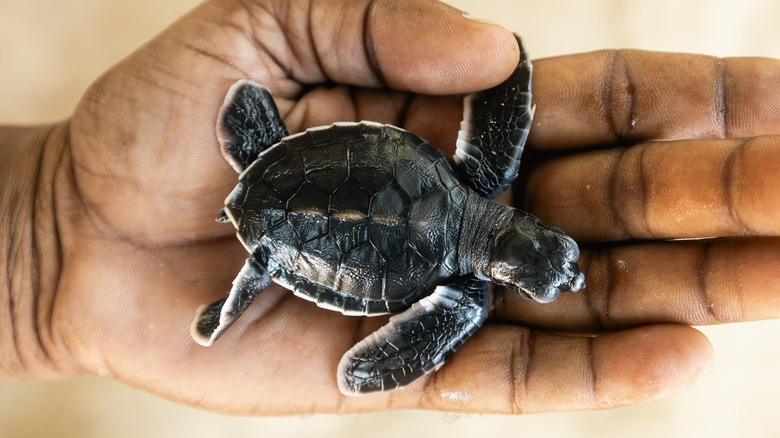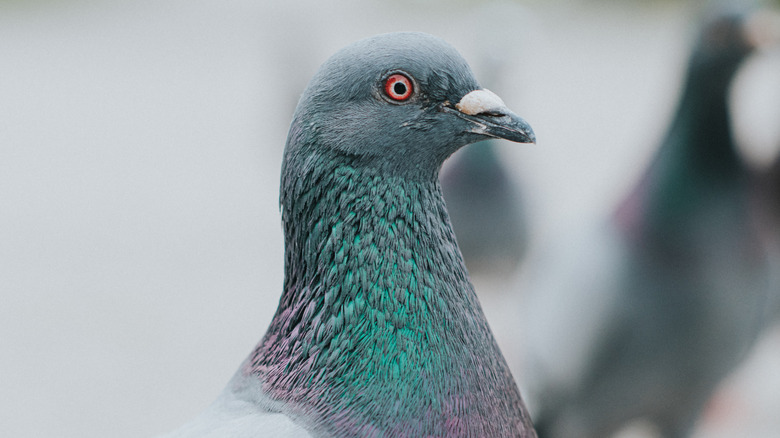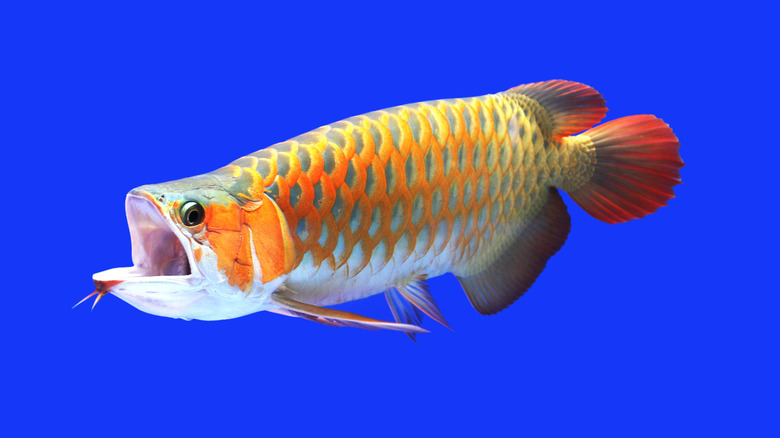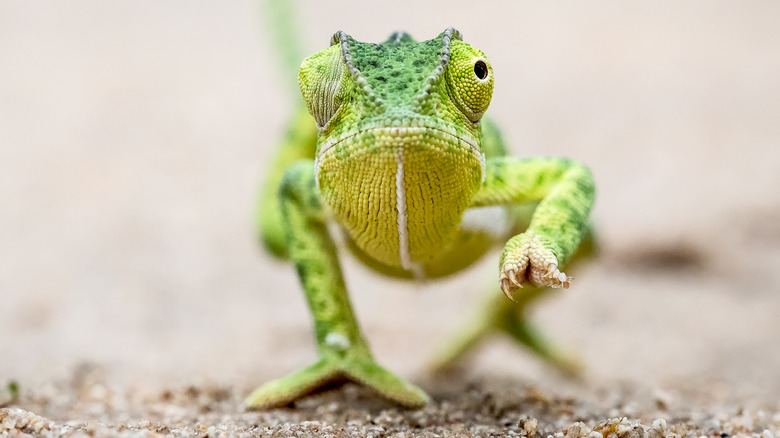The Most Outrageous Ways People Have Tried To Smuggle Animals Through Airports
Behind drugs, weapons, and humans, the illegal animal industry is the largest illegal activity on the planet. While they are living things, many creatures are subject to local and international laws with regard to sale, private ownership, usage, and their status as threatened or endangered wildlife. As a result, some animals are forbidden from leaving certain countries or entering others. But that just makes them worth more, and both individuals and organizations, for all sorts of reasons, from the nefarious to the commercial, will pay whatever is necessary to get the targeted critter. And that's what leads to wild animal trafficking.
Some succeed in smuggling their animals, while others don't. There are many tough and strident security measures in place at national entry points, particularly airports and their baggage handling and customs facilities. Every so often, airport security will discover something bizarre, such as an animal, and thwart the trafficker's efforts. Here are some stories of the most audacious attempts to smuggle animals through world airports.
Turtles in a bra
"We cannot emphasize this enough — stop hiding animals in weird places on your body and then trying to sneak them through airport security," the U.S. Transportation Security Administration wrote on Facebook in July 2025. This was a public response to an incident at Miami International Airport when a woman (whose name was not given in news reports) tried to board a plane while secretly hiding small animals on her person. It didn't end well.
When the individual went through a security checkpoint, she was flagged, pulled out of line, and searched privately. TSA workers found contraband: Two turtles, which had been wrapped in cloth and placed inside of the woman's bra. One turtle died just after the inspection, while the other was given over to representatives of the Florida Department of Fish and Wildlife.
A monkey in a fake baby bump
In November 2007, Spokane, Washington resident Gypsy Lawson and her mother, Fran Ogren, took a trip to Bangkok, Thailand. Upon their return to America later that month, Lawson went through U.S. Customs protocol at the Los Angeles International Airport. She reportedly carried herself as if she were pregnant, nursing a protruding abdomen where her unborn child was apparently gestating.
Lawson passed the Customs inspection process, but shortly thereafter, the ruse was up: Lawson wasn't with child at all — she was with monkey. Under her shirt, she held a small rhesus macaque. It had been sedated to behave properly for both the air journey and for being stuffed into a blouse. In December 2008, Lawson was convicted on federal charges of conspiracy and smuggling goods into the U.S., as was her fellow traveler, accomplice, and mother. She died in an unrelated car accident in 2012.
Pigeons in pants
A 23-year-old man from Australia completed a round-trip flight to the United Arab Emirates city of Dubai in early 2009, and he attempted to reenter the country via the Melbourne Airport. Almost immediately into the standard inspection for illegal materials, airport customs agents found the first of many things that were amiss. In the luggage of the individual (whose name was not revealed to the media), authorities found a container designed to store vitamins that instead carried two birds' eggs. That prompted a full search of the man, which yielded more strange and forbidden objects of a biological nature.
Inside of the man's pants, customs workers found that the traveler was wearing tights, which were used to conceal and secure two padded envelopes, one on each leg, into which he'd snugly placed a couple of live pigeons. While the birds weren't an endangered species, it still violated Australia's serious anti-invasive species laws. The accused faced a fine of more than 100,000 Australian dollars and a 10-year prison term.
Fish in a waistband
Some of the most expensive aquarium fish in the world are rare, tropical fish, and those were exactly the kind of sea creatures that Sharon Naismith tried to traffic into Australia in June 2005. According to NBC News, while Naismith underwent an inspection upon arriving from Singapore in Australia via the Melbourne Airport, some of the customs officers working reported hearing "flipping" sounds that appeared to be emanating from underneath the traveler's clothes. A full-body search was authorized and conducted, and it yielded the source of those weird noises.
Naismith had installed a purpose-built apron beneath her dress that held 15 plastic bags, all filled with water. Inside of them were 51 fish, including 14 catfish and an exceedingly precious and endangered Asian arowana valued at around $30,000. After customs agents searched Naismith's home and found five more fish, she was charged with attempting to import regulated wildlife and sentenced to nine months of community service.
Chameleons in socks and boxes
Chameleons really do change color, but that ability didn't prove to be of much use to a man who attempted to sneak dozens of them into Austria in January 2021. A 56-year-old man, unnamed in news reports, arrived at Vienna International Airport after spending some time in Tanzania and a stopover in Ethiopia. When he was going through the customs process, airport authorities searched his luggage and found a series of weirdly shaped socks as well as many ice cream boxes. Inside of them: chameleons, and lots of them.
Altogether, the man had apparently tried to smuggle 74 chameleons with protected status into Austria. Native to the Usambara Mountains of Tanzania, the lizards were aged all the way from a week old to full maturity, and they could've sold for the equivalent of about $45,000 via illegal channels. The culprit faced a fine of 6,000 European dollars, while the lizards were quickly taken to the nearby Schoenbrunn Zoo. Three of them didn't survive the transport.
